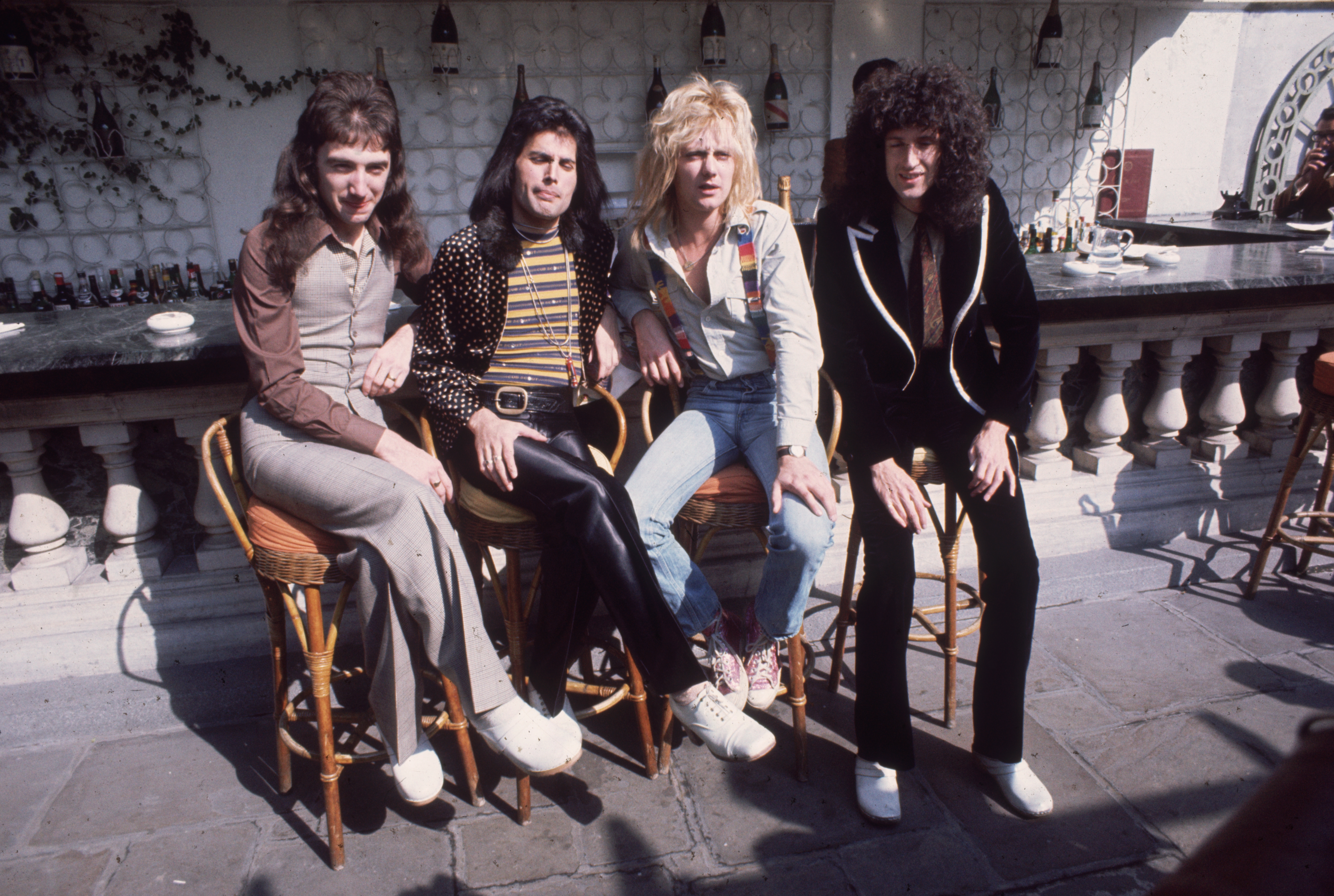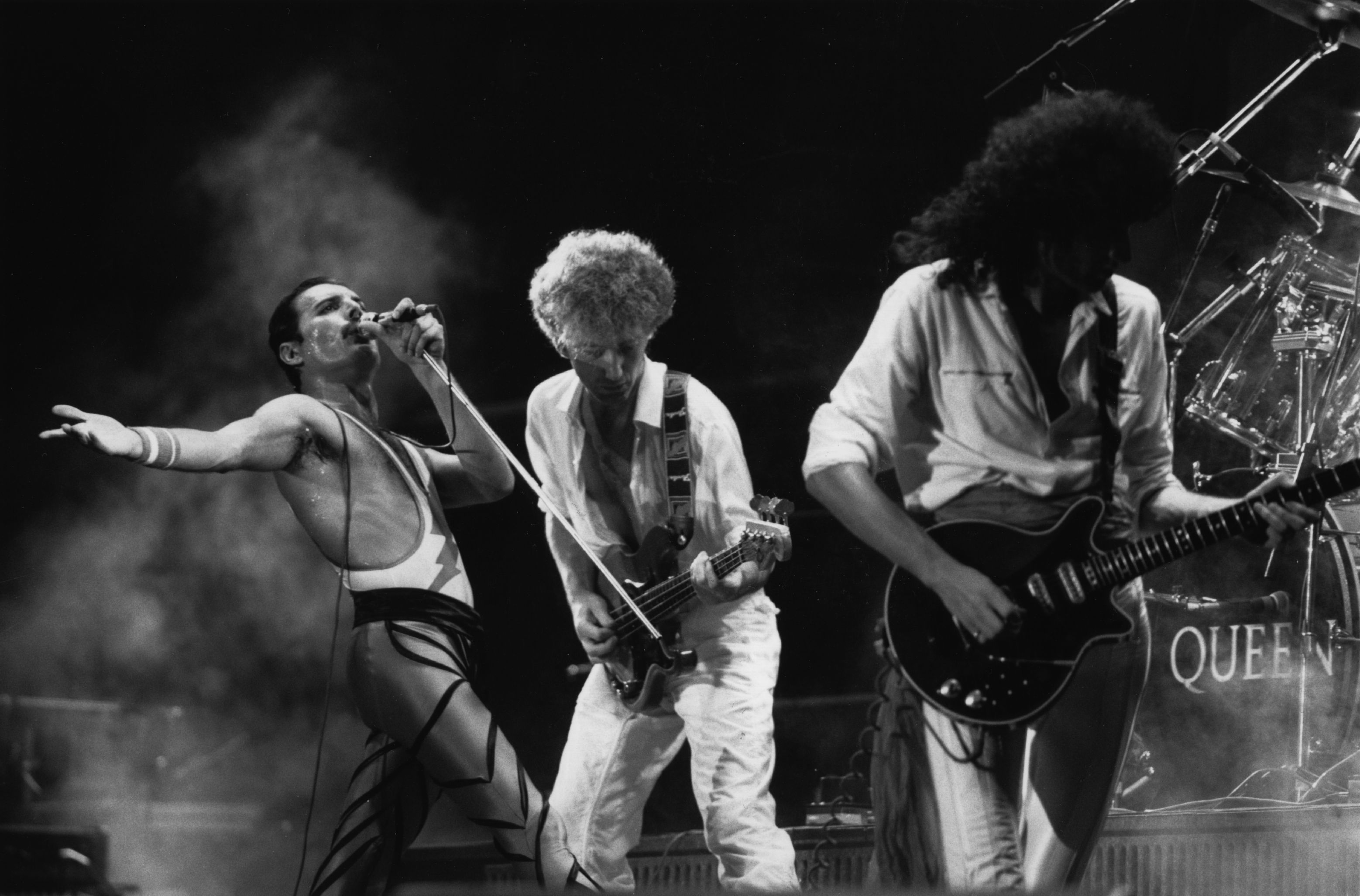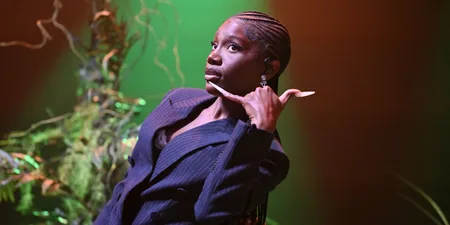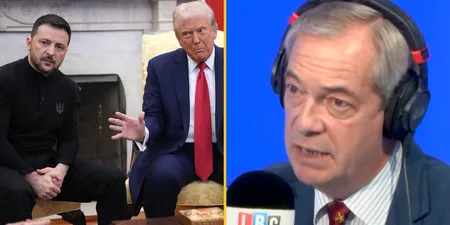“I’m just a poor boy, nobody loves me”
You know how it goes. Everybody knows how it goes. It’s considered one of the most iconic songs in the history of rock and roll.
Released in the fall of 1975, Queen’s “Bohemian Rhapsody” topped the UK charts for nine straight weeks. Made up of three parts with a running time of 5:55, never before had a lead single featured an intro, a ballad segment, an operatic passage, a hard rock segment and a reflective coda. Neither had a single intended for radio play ever topped out at around six minutes – record executives and fellow artists alike told the band that it would never be a hit.
Boy, were they wrong.
Forty three years later and the song is now seeing a new lease of life – not that it needs one – thanks to the release of a Queen biopic, starring Mr. Robot’s Rami Malek as Freddie Mercury, titled Bohemian Rhapsody. Due out in October, the movie tells the band’s story, with a focus on Freddie’s life and the making of the song that changed everything for them… and for music.
One of the men responsible for helping lay down “Bohemian Rhapsody” was assistant engineer Gary Langan. For a 19-year-old, working on A Night at the Opera, at the time a make or break album for Queen, it was an exciting leap into the unknown.
Gary’s varied career has spanned four decades and has also seen him work with Yes, Spandau Ballet and ABC, as well as recently overseeing the SACD remaster of Jeff Wayne’s War of the Worlds. And along with programmer J. J. Jeczalik, arranger Anne Dudley, music journalist Paul Morley and producer Trevor Horn, who joined the group at a later stage, he launched his band Art of Noise in early 1983.
Ahead of Gary offering an unparalleled behind the scenes look into his experience of working on “Bohemian Rhapsody” at this weekend’s Festival of Sound, we were able to get an exclusive sit down with him and get the inside scoop on how this musical masterpiece came to be.
“It’s a date stamp you’ll never be able to remove.”
The way in which Gary describes “Bohemian Rhapsody” is simple and to the point. There really is no better way to put it. You could get complex but why bother? Everyone knows it. Everyone knows the lyrics. Everyone knows it’s one of the greatest songs of all-time.
Before first meeting Queen – who, if truth be told, he wasn’t so much a fan of prior to working with them – Gary had never really worked with any rock bands. Working at SARM Studios in Notting Hill their main focus had been TV jingles and singles for pop acts such as David Cassidy, the Bay City Rollers, Stephanie de Sykes and even Rupert the Bear.
“The first time I met Queen was at SARM,” Gary begins. “They were there because their engineer Mike Stone was leaving Trident Studios, which was where they were set up and camped out when signed to the Sheffields, and he was coming to SARM to become a director. So to check things out he came over and mixed ‘Now I’m Here’ for the album Sheer Heart Attack. That was my first encounter with the band, but Freddie and Brian weren’t there.”
Britain at the time was coming off of the back of a three-day week introduced by the Tory government because of a miners strike, unemployment was at an all-time high, interest rates were soaring and Margaret Thatcher was in power.
“It wasn’t a great time in Britain but it was a great time to be banged up in a little studio in the East End of London,” says Gary.
While most people have heard the story of how Queen escaped to the country to Rockfield Studios just outside the village of Rockfield, near Monmouth in Wales, to record “Bohemian Rhapsody”, as well as the album it would later be housed on, A Night at the Opera, that’s only part of the story.
“They spent two to three weeks at Rockfield cutting all the backing tracks,” Gary explains. “A few of them – Rodger specifically – then began to get stir crazy and wanted to return to London and so the vocals, the guitars, and some other bits for the album, were recorded at SARM with us.”
Gary’s role at SARM as assistant engineer was a busy one. Doing everything from setting up the studio and making sure everything worked to making the tea and nipping out to buy the band’s cigarettes, there wasn’t much his job didn’t involve.
“The main thing you’ve got to do,” he begins. “You’ve got to make the room work. It really is a tough job because you’ve got to be one step ahead of the game the whole time. There were these huge icons who wanted different things at different times – it was so scary.”
One thing he hated doing, not because it was a mundane task but more so because it was pretty damn daunting, involved Rodger Taylor’s car.
“Have you ever tried driving a Ferrari at 19?”
“I had to park Roger’s Ferrari for him,” he says, laughing. “Try getting a Ferrari out of the gutter when all you’ve driven is a Ford Cortina. When Roger couldn’t be arsed to park it in the car park he’d just throw me the keys. Imagine that. It took me about half an hour just to get it going because I didn’t have the guts to get the revs up to 2000 before dropping the clutch.”
Working on A Night at the Opera alongside producer Roy Thomas Baker and engineer Mike Stone, Gary felt a lot of pressure whilst working on the Queen sessions. Often saying to himself, “Whoa Langan, you’re doing quite well here. Don’t blow it,” it was an opportunity of a lifetime.
“Roy was a master of getting you to jump through hoops,” he says of the decorated producer who has worked with everyone from Mick Jagger to Dusty Springfield. “I had already had a taste of him before meeting Freddie and Brian [May] but I knew there was definitely more to come.”
Meeting Freddie and Brian for the first time when the A Night at the Opera sessions first came to SARM, the first thing Gary remembers is that the band turned up with more multitracks than he’d ever seen before.
“I was so shit scared,” he remembers. “There was no room for expectations going in. I was a white boy from Wimbledon, a public school boy, and I’ve got Freddie Mercury and Brian May in the studio with me.
“Freddie’s there with the fingernails on his left hand painted black and he’s sitting there with the top button of his trousers undone. I’m thinking ‘What’s this all about?’ I rang my mum and said, ‘Mum, you told me this would be a good job for me.’”
https://www.youtube.com/watch?v=oozJH6jSr2U
At 5:55 in length “Bohemian Rhapsody” was already a song that would raise a few eyebrows, never mind the fact it was a song split into three parts. The norm wasn’t something Freddie Mercury was ever interested in. Witnessing early discussions amongst the band about the track’s length that would occasionally turn into arguments, Gary remembers the first time he heard it.
“It was too out there for it to register exactly what I was listening to at first.”
“I was used to pop songs,” he explains. “Here was something that was six minutes long and I was lost halfway through the first bit. As far as I was concerned it was a ballad – at this point it was just piano, bass, drums and a guide vocal. When it first came to SARM that’s when it was cut into three.”
With the band’s record label telling them they’d have no chance getting the song played on radio, as well as friends and fellow musicians telling them the same, it would take a magical moment and genius marketing ploy to force the hand of EMI.
“Freddie was good friends with Kenny Everett, who had a show on Capital Radio at the time,” Gary explains. “He came to a session and sat in the control room with me and we played him the record. He loved it. Freddie told him he could have a copy.
“I went and made him a reel-to-reel copy but we told him he could only have it if he promised not to play it. With a wink he said he wouldn’t play it but of course he did. He teased it at first by only playing parts of the song but then he played it in full something like 14 times during the same show – I still have a recording of him playing it on air.”
The rest is history, as they say. But what it took to actually record the song was phenomenal.
“Freddie knew what he wanted. He always knew what he the end result should be. He was a perfectionist, nothing could be a compromise,” says Gary.”
And what Freddie wanted included featuring over 100 vocals on the middle section of the track alone, the part that included all those damn Galileos.
“I can tell you that Roger was there almost a week recording Galileos for that middle bit,” Gary says with a smirk on his face. “And there were some tantrums. There was one point where he really lost it and the headphones came flying off his head and towards the control room.
“Off the multitrack that I have I can play you one track from that part in particular where I know that there are 24 voices on just that one track. And you’ve got 12 others free, so you do the maths.”
Staying on the process of recording the vocals themselves, Gary continues:
“This is where the creative genius of Mike and Roy comes in. So Fred’s got all these ideas and he wants to do all these harmonies and he wants them interweaving and interconnecting but it was a question of technically how do you get that on 12 spare tracks. Because that’s all you’ve got. There are no more. And every time you use one and fill it up you then only have 11.
“It was just an amazing piece of work of art. And each of those little mixes that go together to make the opera section, all the mixes and the balances of all the vocal parts, each one of those was done with three or four of us working at the console at the same time.
“All those bits were pre-recorded and constructed in the same track. There was no automation, no computers. Roy would be pushing some levels. Harmonies would have to be switched in and out to make it all happen and so Mike would be doing that. Roy would be doing something else too. I’d be doing something else too and I’d be looking after the tape machines.
“It was chaos. It was absolutely brilliant.”
Speaking of tape machines, there’s a hilariously brilliant story that Gary recalls involving Brian.
“There’s a great story, and it’s true,” he begins. “We’re chuffing our way through the middle bit, the opera bit – I think Roger had been at the mic for three or four days by this point – and I’m over by the remote for the tape machine and Brian’s lurking behind the tape machine. And every time I hit stop I kept noticing that Brian would get down and look at the tape. Then I’d hit rewind and Brian would wander around again. Then I’d stop it and Brian would get down and look at the tape again. After about half an hour or so I stop it and Brian suddenly chirps up and says, ‘You know what guys? I can see through this tape.’”
Laughing out loud remembering the way in which Brian said it, Gary explains why Queen’s curly-haired string maestro could see through the tape.
“Tape is nothing more than iron filings glued to a bit of plastic that a magnet then arranges into pretty shapes – like you did in school – and that becomes lovely bits of sound. But it falls off. You can’t stick it back on. You can’t go along with a pair of tweezers and pick up the little bits and stick them back on. So at some point a copy was done of the multitrack and we then worked on that but the original did start to get thin.”
For Gary, working with Queen was more than just a job. They were an example of what a great rock group looked like to him. And working with Roy and Mike helped shape the way in which he would work for years to come – “They were masters of moving the boundaries and twisting the rules.”
“I knew the song was special,” Gary says thinking back to the first time he heard the finished version of “Bohemian Rhapsody” in its entirety whilst standing at the back of the control room.
“You didn’t know exactly how special, or what type of special, but you knew it was a once in a lifetime moment.”
“Sure, you can only make that statement retrospectively, but there was without a doubt something incredible happening when you were stood there listening to it that first time. I was incredibly proud of it and proud to have been a part of it.”
Freddie Mercury will forever go down as one of the greatest musical icons who ever lived. Losing him in 1991 was a huge blow. That voice. That personality. That power. That heart. It all disappeared into the night like the sun at dusk. It was such a sad moment for so many people.
Taking a moment to remember Freddie and the time he spent with him, Gary thinks back to one of his favourite memories of the flamboyant frontman.
“When they were working on A Day at the Races the band had come away from being managed by the Sheffields,” he explains. “As part of the deal they actually got a whole chunk of money which was owed to them, which they had never before been able to get their hands on (the band’s early deal saw them being paid peanuts) and when the cheque came through Fred went out shopping with his minder.
“He went down to Kings Road and he bought, more or less, the whole of Tiffany, the lamp shop. And he came back into the control room, and he had loads of bags and everything, and he just went: ‘Darlings, I couldn’t spend another penny!’ And he dropped the bags on the control room floor.
“Apparently the limo was just full of lamps that he had bought. He spent a shed load on lamps and lampshades. But I’ll just never forget him saying, ‘And I couldn’t spend another penny! I’m so bored of spending money darlings.’ That was so Fred.”
Queen’s “Bohemian Rhapsody” Unwrapped with Gary Langan at the Festival of Sound (Sept 28th – 30th) will take place Sept 29th. For more info and tickets visit: www.festivalofsound.co.uk












































